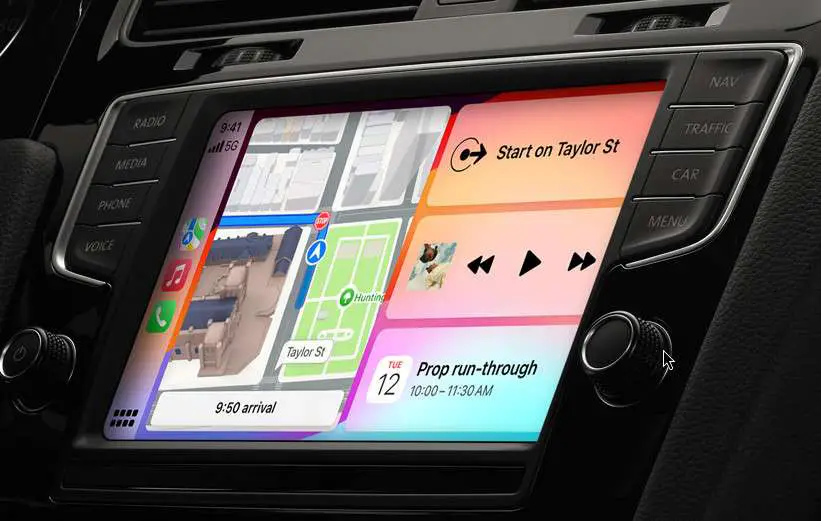In the fast-paced world of modern technology, Apple CarPlay has emerged as a vital tool for drivers, seamlessly integrating their iPhones with their car’s infotainment systems. With its intuitive interface and hands-free functionality, CarPlay enhances the driving experience by providing access to navigation, music, calls, messages, and more, all while keeping your focus on the road ahead. However, despite its convenience, users may encounter occasional glitches or connectivity issues that disrupt the seamless operation of Apple CarPlay. In this comprehensive guide, we’ll delve into common reasons why Apple CarPlay might not be working as expected and provide detailed solutions to help you troubleshoot and resolve these issues effectively.
1. Check Cable and Connections
The journey to resolving Apple CarPlay issues often begins with a simple inspection of the physical components. Start by examining the USB cable connecting your iPhone to the car’s USB port. Ensure that the cable is not frayed or damaged and securely inserted into both the iPhone and the car’s USB port.
It’s crucial to use a high-quality, Apple-certified cable to ensure optimal compatibility and reliable connectivity between devices. Additionally, check for any dust, debris, or corrosion in the USB port that may hinder proper connections. If necessary, gently clean the USB port using compressed air or a soft brush to remove any obstructions.
2. Verify Car Compatibility
Before delving further into troubleshooting, it’s essential to confirm that your vehicle supports Apple CarPlay. While most modern vehicles are equipped with CarPlay functionality, some older models may require a software update or additional hardware to enable compatibility.
Consult your car’s manual or contact the manufacturer to verify CarPlay support and determine if any updates are needed. If updates are required, follow the manufacturer’s instructions to ensure that your car’s infotainment system is running the latest firmware version, thereby ensuring seamless integration with Apple CarPlay.
3. Update iOS and CarPlay
Keeping your iPhone’s operating system and CarPlay software up-to-date is paramount to ensure smooth performance and compatibility. Regularly check for updates to the iOS operating system on your iPhone by navigating to Settings > General > Software Update.
If updates are available, download and install them to ensure that your iPhone is running the latest version of iOS. Similarly, check for updates to the CarPlay software on your car’s infotainment system.
Depending on your vehicle’s make and model, updates may be available through the manufacturer’s website, dealership, or over-the-air (OTA) updates. Follow the manufacturer’s instructions to install any available updates and ensure optimal CarPlay functionality.
4. Restart Devices
When troubleshooting Apple CarPlay issues, a simple restart of the involved devices can often work wonders in resolving connectivity issues. Begin by turning off your iPhone and restarting it to refresh the device’s software and clear any temporary glitches.
Similarly, restart your car’s infotainment system by turning it off and then back on again. Once both devices have been restarted, reconnect your iPhone to the car’s USB port using the USB cable and check if Apple CarPlay is functioning properly. Sometimes, a fresh start is all it takes to restore seamless connectivity between your iPhone and your car’s infotainment system.
5. Reset CarPlay Settings
If the aforementioned steps fail to resolve the Apple CarPlay issues, you may need to reset the CarPlay settings on your iPhone. To do so, navigate to the Settings app on your iPhone, then select General > CarPlay. From the list of available CarPlay connections, select your car’s name or icon, and then tap “Forget This Car” to remove the existing CarPlay connection.
Once the connection has been forgotten, reconnect your iPhone to the car’s USB port, and follow the on-screen prompts to set up CarPlay again. This process will refresh the CarPlay settings on your iPhone and establish a new connection with your car’s infotainment system, potentially resolving any underlying connectivity issues.
6. Check Restrictions and Do Not Disturb
Certain iPhone settings, such as Restrictions and Do Not Disturb, may inadvertently interfere with the functionality of Apple CarPlay. To ensure optimal performance, check your iPhone’s settings and make necessary adjustments.
Start by navigating to Settings > Screen Time > Content & Privacy Restrictions and ensure that CarPlay is not restricted. If restrictions are enabled, disable them to allow full access to CarPlay features and functionality.
Additionally, check the Do Not Disturb settings on your iPhone to ensure that it does not interfere with CarPlay’s ability to display notifications, calls, and messages while driving. Disable the Do Not Disturb mode if necessary to allow uninterrupted communication through CarPlay while on the road.
7. Test with Another Device
To pinpoint the root cause of Apple CarPlay connectivity issues, consider testing with another compatible device, such as a friend’s iPhone or a family member’s device. If the second device is able to connect and function seamlessly with CarPlay in your vehicle, it suggests that the problem may lie with your iPhone rather than the car’s infotainment system.
In such cases, you may need to further troubleshoot your iPhone or seek assistance from Apple Support to diagnose and address any hardware or software issues affecting CarPlay connectivity. On the other hand, if the issues persist even with a different device, it indicates a potential problem with the car’s infotainment system or connectivity settings, prompting further investigation and potential assistance from the vehicle manufacturer or dealership.
8. Review App Compatibility
While Apple CarPlay supports a wide range of apps for navigation, music, messaging, and more, not all apps may be fully compatible or optimized for use with CarPlay. Incompatibility issues with specific apps can sometimes manifest as connectivity issues or glitches within the CarPlay interface.
To ensure optimal performance, regularly check for updates to CarPlay-compatible apps on the App Store and install any available updates. Additionally, review the list of installed apps on your iPhone and remove any outdated or incompatible apps that may be causing conflicts with CarPlay functionality. By ensuring that only compatible and up-to-date apps are installed on your iPhone, you can minimize the risk of encountering issues while using Apple CarPlay.
Conclusion
Apple CarPlay offers a convenient and intuitive way to integrate your iPhone with your car’s infotainment system, providing access to a wide range of features and functionality while on the go. However, occasional connectivity issues or glitches may arise, disrupting the seamless operation of CarPlay. By following the comprehensive troubleshooting steps outlined in this guide, you can effectively diagnose and resolve common Apple CarPlay issues, ensuring a smooth and enjoyable driving experience.
Whether it’s checking cables and connections, updating software, or adjusting settings on your iPhone, there are various steps you can take to troubleshoot and restore CarPlay functionality. If issues persist despite your best efforts, don’t hesitate to seek assistance from Apple Support, your vehicle manufacturer, or authorized dealership. With persistence and patience, you can overcome Apple CarPlay challenges and get back on the road with confidence, enjoying the convenience and connectivity that CarPlay has to offer. Stay connected, stay safe, and happy driving!
You might also like,

